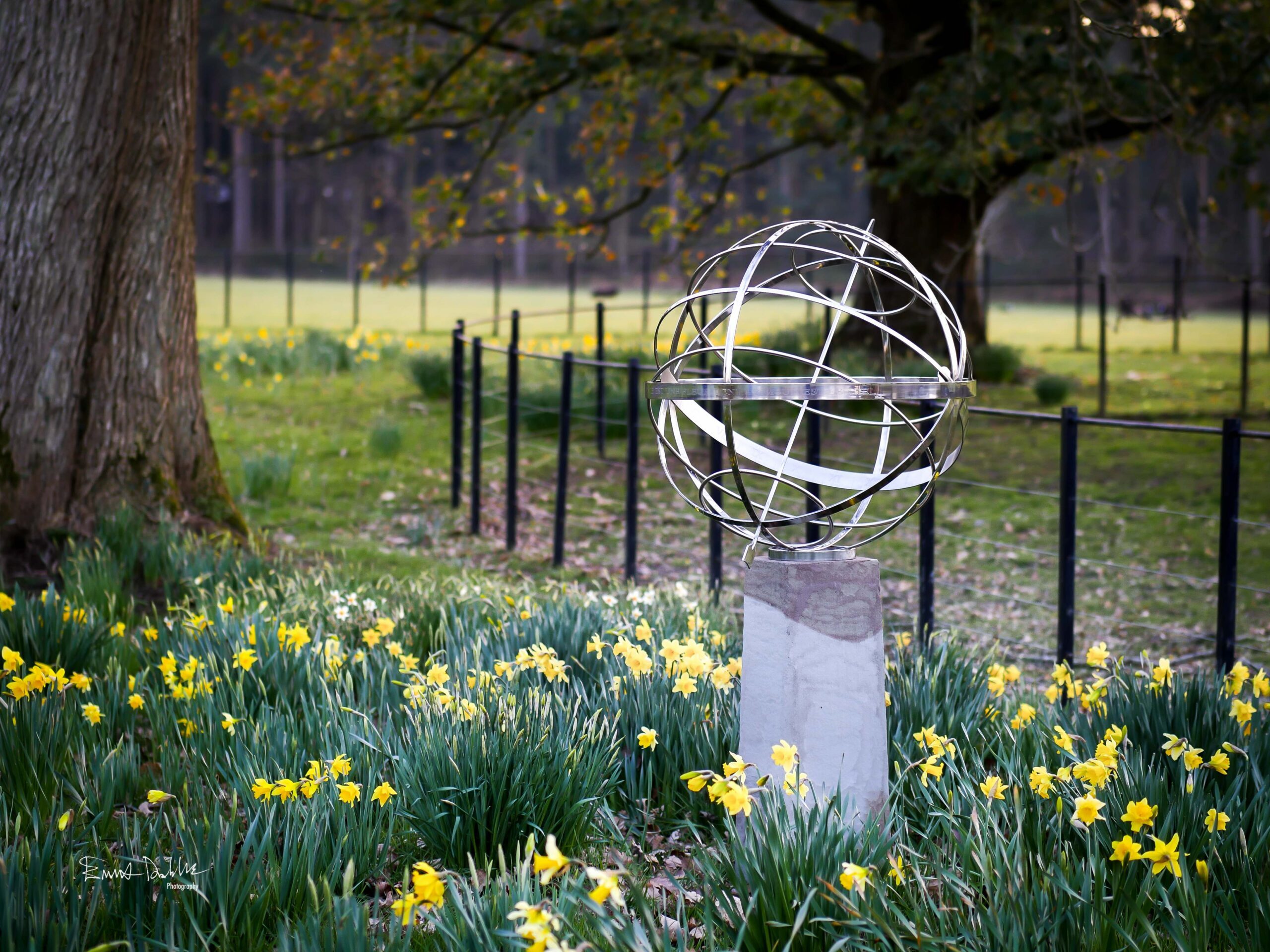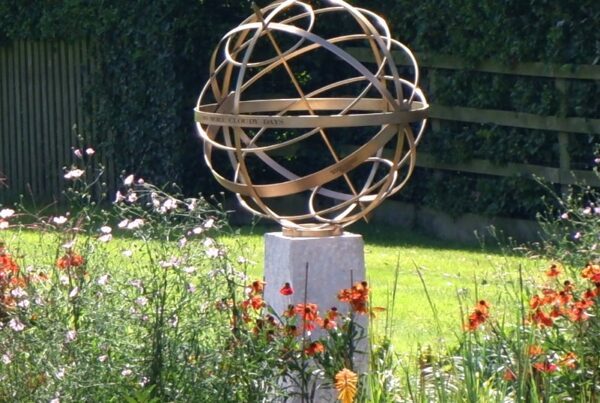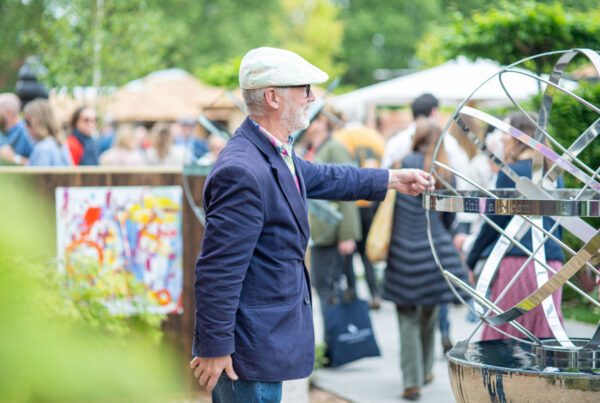With the advent of Spring and daffodils in bloom we wanted to wish you a Happy St Davids Day from the Border Sundials workshop in South Wales and shine a light on the Welsh Daffodil.
Lots of people think that Armillary Spheres are the reserve of formal gardens and avenues of topiary but the picture below of an armillary in a local Welsh parkland surrounded by native welsh daffodils should dispel this myth!
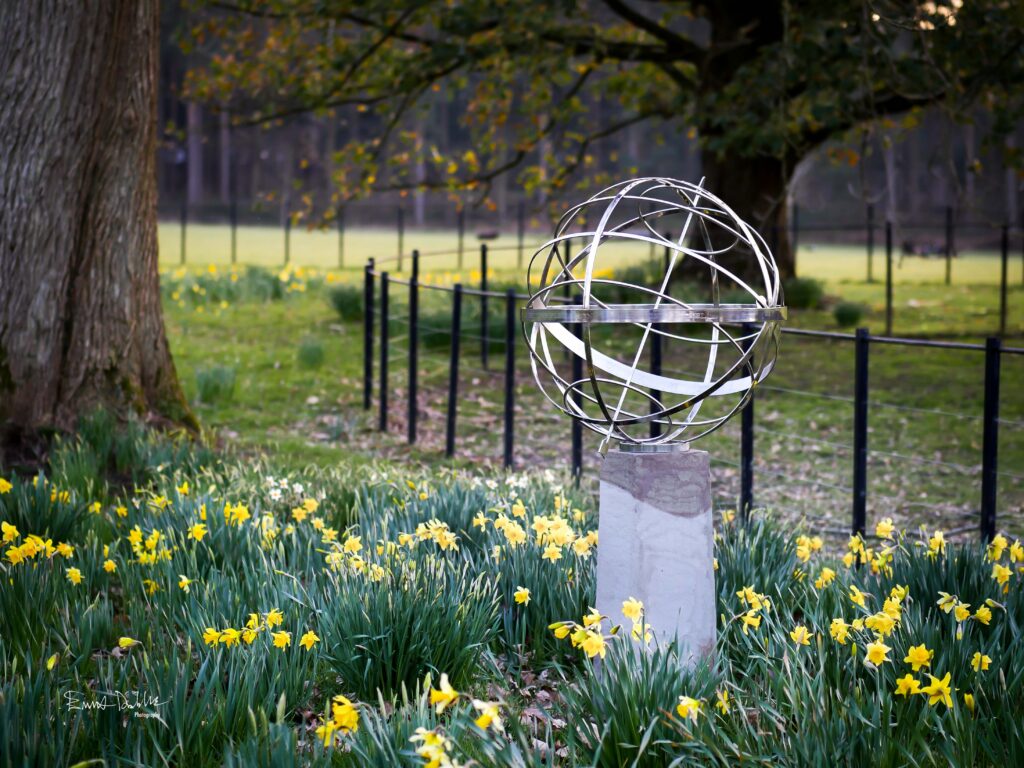
Why Welsh?
Instantly recognisable thanks to its bright yellow petals, the daffodil has become the national flower of Wales. Exactly how the flower wangled its way into Welsh culture is something of a mystery, its rise in status was likely aided by the flower’s Welsh name: cenhinen Bedr, which literally translates as ‘Peter’s leek’ – leeks having been a symbol of Wales since before the 16th century (though, who exactly Peter is, we’re not sure!) The fact they’re also somewhat prettier than leeks (especially when worn on clothing), likely aided their swift rise to fame as emblems of Wales. They were first advocated to be a symbol by David Lloyd George, the UK’s only Welsh prime minister, it is reported that he insisted the flower be used for the investiture of Edward VIII.
The History of Daffodils
The Romans are believed to have brought the bulbs to the British Isles because they thought the sap had healing powers. Unfortunately the crystals formed by the sap actually irritate skin, but the oil has been used …. you guessed it, as an aphrodisiac and also a cure for baldness.
Narcissus is the Latin name for Daffodils and also their genus name, it comes from the ancient Greek legend of Narcissus the hunter. Story has it that when Narcissus saw his reflection in a pool of water, he was so enthralled he could not move. He realised that he could only love himself and this burning passion caused him to melt away. In his place was left the beautiful yellow flower with a long stem that allowed it to bend and see it’s reflection.
There are 36 species of daffodil, their popularity as an ornamental plant has led to the creation of over 26,000 cultivated varieties. The yellow trumpets of daffodils brighten up the dullest spring day as they cluster together in gardens and in parks during March and April. But these are often the planted or escaped garden varieties. The real treat is spotting a Wild daffodil among the dappled shade of an ancient woodland, or pushing up through the grasses of a damp meadow. Once abundant and hand-picked for markets, this wildflower is now much rarer, having declined during the 19th century as a result of habitat loss. However it can be seen close to Border Sundials in the Black Mountains and along the Gloucestershire-Herefordshire border.
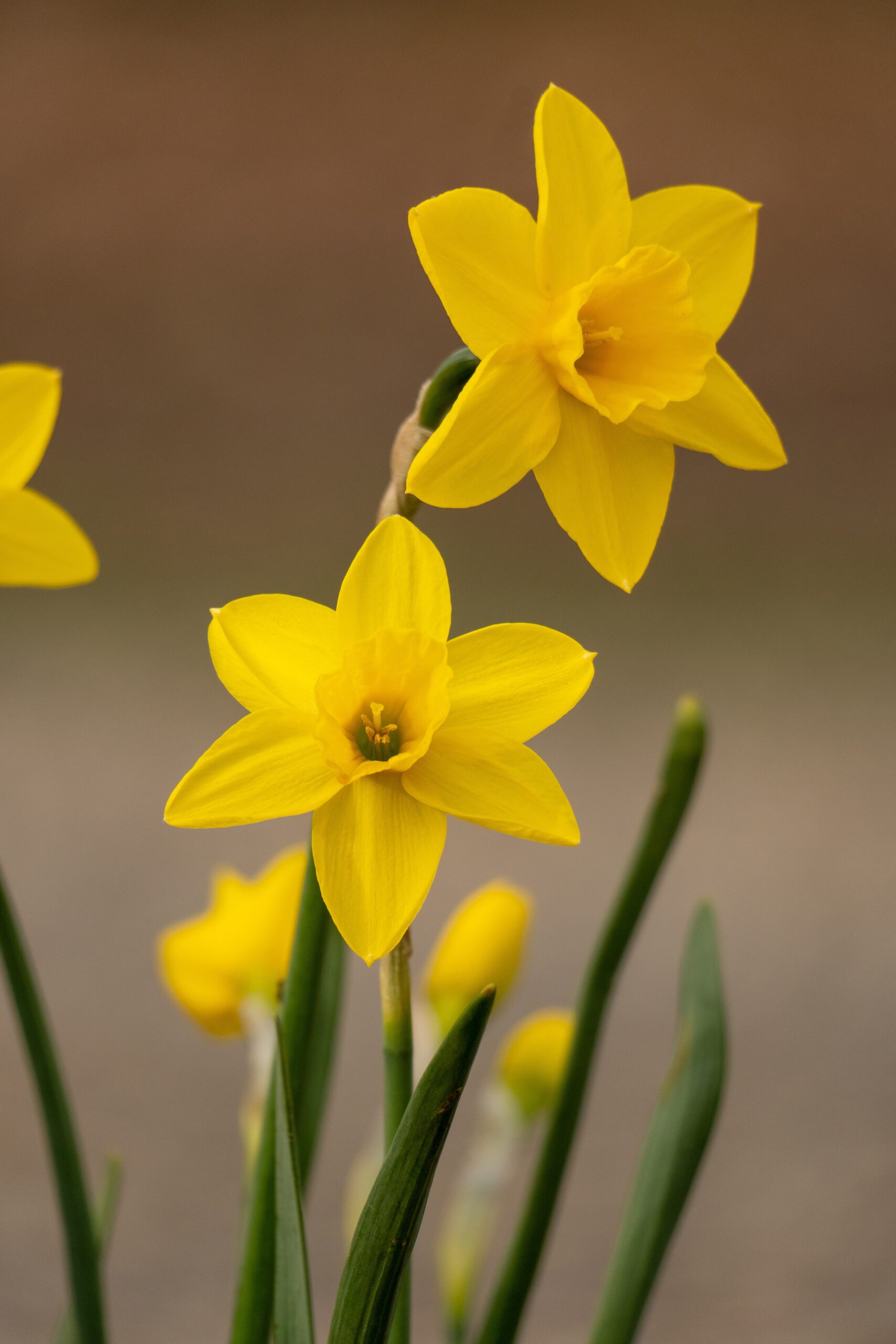
The wild daffodil, Narcissus Obvallaris, has narrow, grey-green leaves and a familiar daffodil flower, but with pale yellow petals surrounding a slightly darker yellow trumpet. The wild daffodil is also relatively short and forms clumps, carpeting the ground, it is ideal for planting into rough grass or meadows where it will spread and self-seed when left undisturbed. The best planting time is autumn for a fabulous spring show of positivity! We recommend the following suppliers and visits for those interested in the wild daffodil.
By Capel Tenison
Useful sites for all things Daffodil
Suppliers
seeds https://www.plant-world-seeds.com/store/view_seed_item/2567/narcissus-obvallaris-seeds?currency=GBP&gclid=CjwKCAiAibeuBhAAEiwAiXBoJHHliV8Qon4yM5lNHl94mXNLU-R2sFbZ_3fG9pBq2ZU0TYF_yC-PEBoCuloQAvD_BwE
To plan your visit to see wild daffodils in Wales and across the UK head to these sites https://www.welshwildlife.org/nature-reserves/coed-y-bwl

